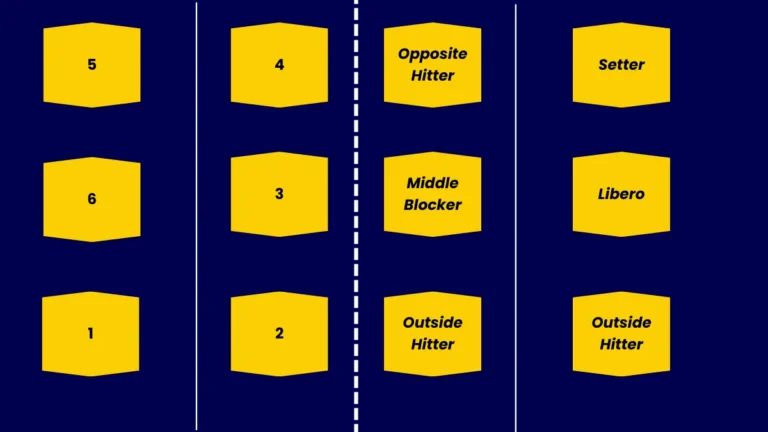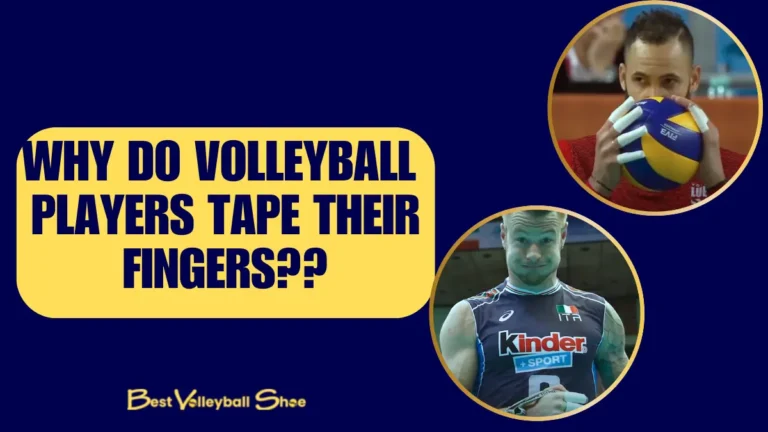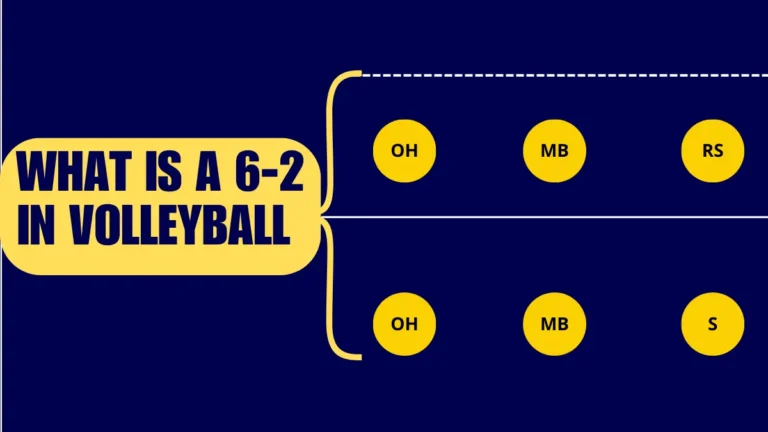Mastering The 5-1 Rotation Strategy in Volleyball

The 5-1 is not a number but the most important volleyball strategy. Without understanding it, setters might find themselves out of position, hitters might not be used properly, and overall, your team might lose even when victory is within reach.
Before I discuss 5 -1 advance rotation techniques in detail, do you know the basics of the 5-1 in volleyball? Let’s review, It’s a key strategy in volleyball where five hitters and one setter play the whole game. The setter stays on the court constantly, moving between the front and back rows to run the offense, while other players change positions.
The 5-1 system in volleyball offers many advantages. It allows the team to have a consistent setting throughout the game because one setter is always on the court. This system also gives the team many different ways to attack, depending on which players are in the front row and more.
If you want to know what 5-1 in volleyball is, how it works, and how its techniques can outsmart your opponents and boost your players’ potential, than read through the article.
So lets Start!
What is a 5-1 in Volleyball? Rotation Strategy Decoded
The term “5-1” in volleyball refers to a specific type of offensive system. Let’s break down what these numbers mean:
- The “5” represents five hitters
- The “1” represents one setter
In a 5-1 formation, five players can attack the ball, and one player is responsible for setting. This system allows a team to have a dedicated setter on the court at all times, which can lead to more consistent and effective offensive plays.
To understand how a 5-1 works, it’s important to know the different roles players have in this system. The key positions in the 5-1 rotation include:-
The Setter
The setter is the key player in a 5-1 system. They are responsible for:
The setter in 5-1 stays in the game all the time, even when they rotate to the back row. This allows the team to have a consistent setter throughout the match.
The Hitters
In a 5-1 system, there are five hitters. These players include:
- Two Opposite Hitters opposite to each other
- Two Middle Blockers opposite to each other
- Opposite or Right Side Hitter opposite to the setter
Each of these hitters has specific responsibilities and plays a crucial role in the team’s offense.
The Libero
Many teams adjust the basic 5-1 system to fit their needs. These teams use a libero, a defensive specialist who plays only in the back row and normally substitutes the middle blocker in the back row:

How the 5-1 System Works? – Rules and Mechanics
Now that we know the basics about the 5- 1 system, understanding how this system works is important so your team can play better. Let’s break down the key parts of the 5-1 system and see how players rotate during a game.
Player Positioning
Players’ positions on the court are determined by the players next to them. For example, a setter can’t move in front of the outside hitter or to the left of the libero. Each player has boundaries they must stay within before the serve.
Base Positions
When the ball crosses to the opponent’s side, players should switch to their base (or defensive) positions in the following ways:
- Outside hitter: Front left
- Middle blocker: Middle front
- Right-side hitter: Front right
- Setter: Back right
- Libero: Middle back
- Other outside hitter: Back left
Rotations
In volleyball, players rotate clockwise after winning a point when their team doesn’t serve. In a 5-1 system, the setter will be in different positions on the court as the team rotates. Here’s how it typically looks:
Attacking Options
The 5-1 system gives teams many options for attacking:
This flexibility allows teams to keep their offense strong no matter where the setter is positioned.
How to Set up a Team to Serve and Receive Rotations within a 5-1?
Setting up your team’s serve receive rotations in a 5-1 system is key to a strong volleyball strategy. Let’s break down each rotation to help you understand how to position your players effectively.
Rotation #1- Setter in Zone 1
Serve:
Serve Receive:
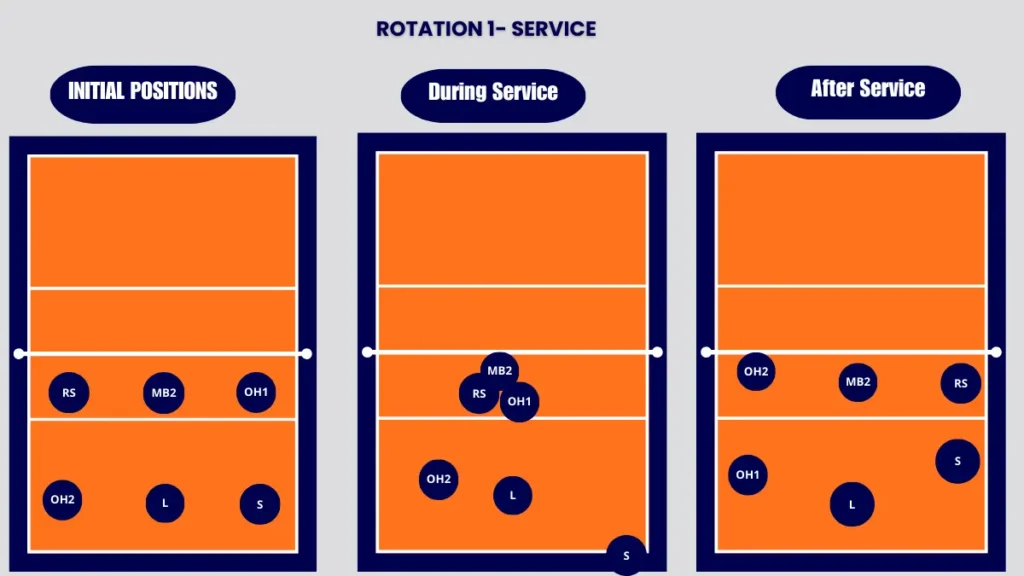
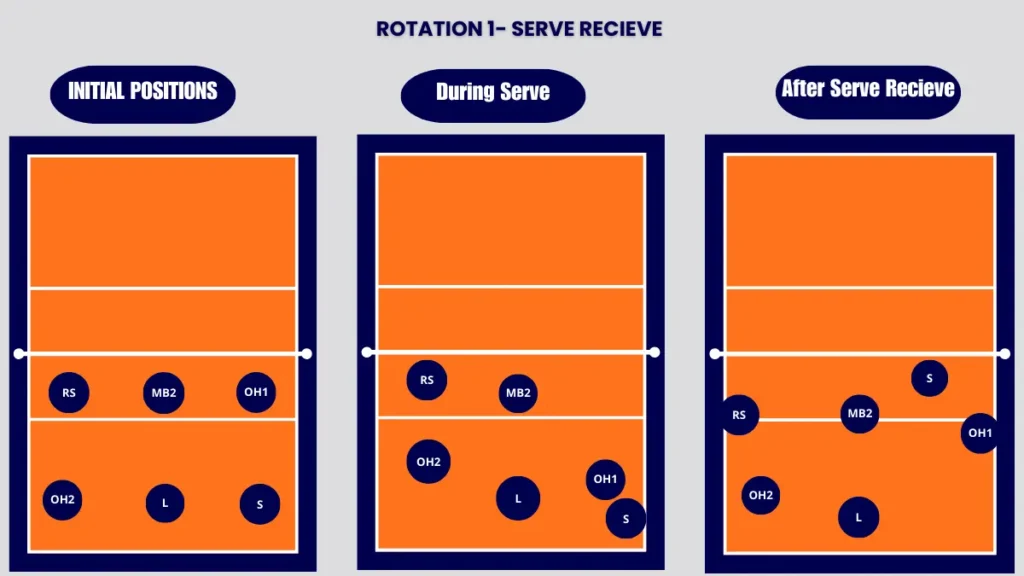
Rotation #2- Setter in Zone 6
Serve:
Serve Receive:


Rotation #3- Setter in Zone 5
Serve:
Serve Receive:
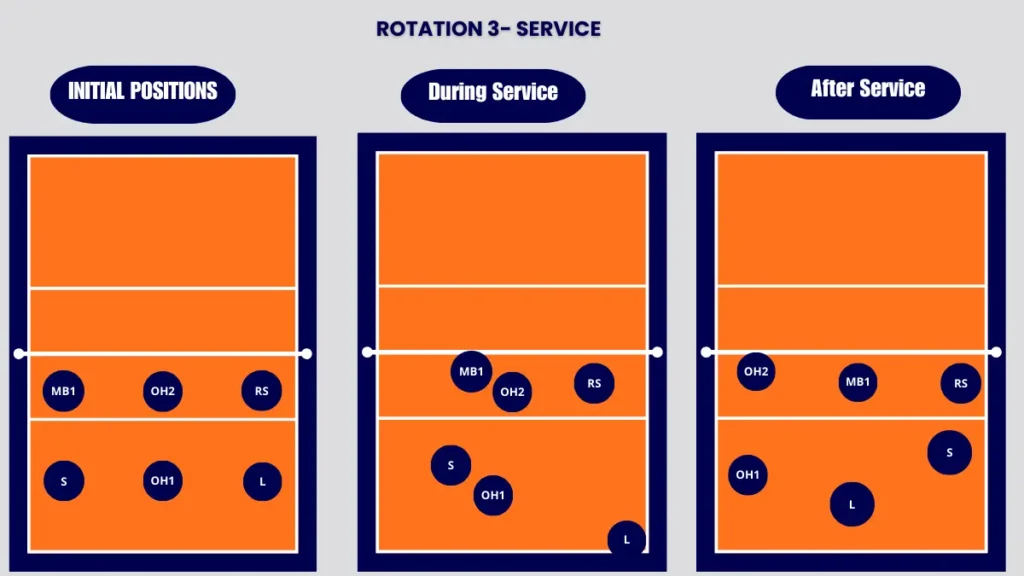

Rotation #4- Setter in Zone 4
Serve:
Serve Receive:
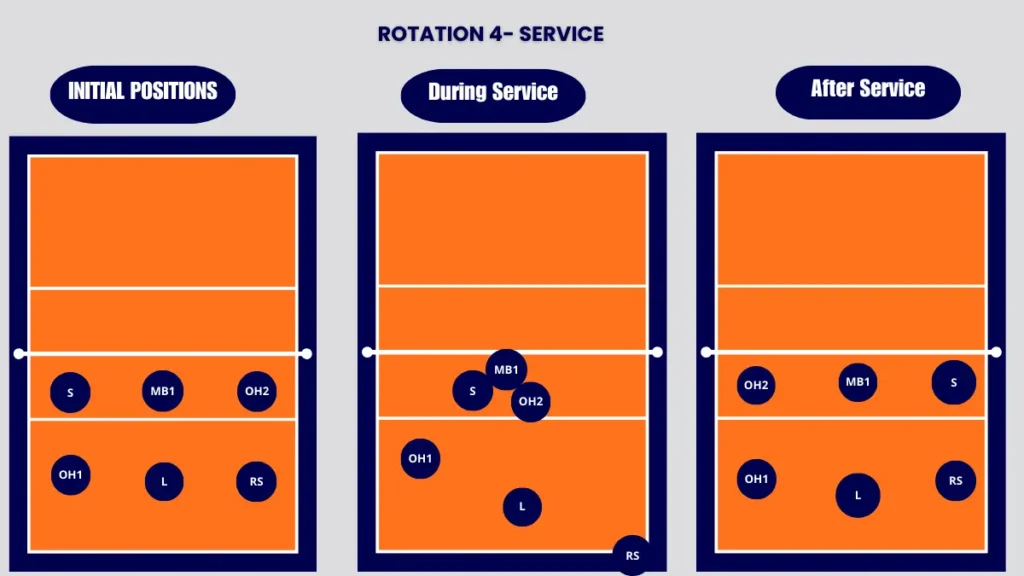

Rotation #5- Setter in Zone 3
Serve:
Serve Receive:

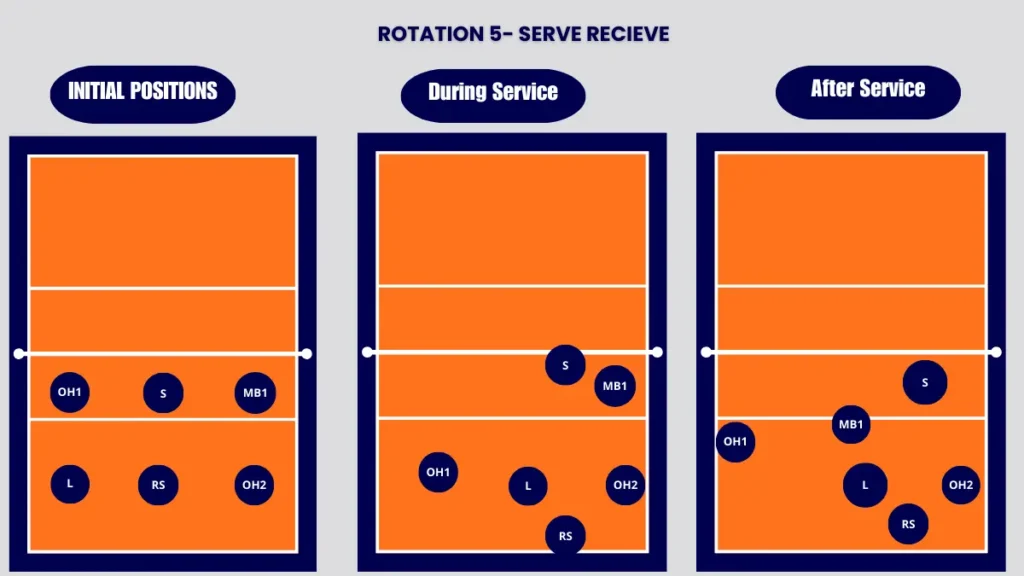
Rotation #6- Setter in Zone 2
Serve:
Serve Receive:


By understanding these rotations, you can help your team play more effectively in a 5-1 system. Practice these positions regularly to improve your team’s serve-receive strategy.
Remember, these rotations can be adjusted based on team strategy and player strengths. The key is to follow the rules of rotation while getting players into the best positions for serving, passing, and attacking.
For practical demonstration you may watch the detailed video.
Advantages of the 5-1 System
The 5-1 system has many good points that make it popular in volleyball. Let’s look at why many teams choose to use this way of playing.
Consistency in Setting
Having one dedicated setter throughout the game leads to:
Offensive Flexibility
The 5-1 allows for a variety of offensive plays:
Simplicity
For many teams, the 5-1 is easier to learn and execute compared to other systems. This makes it a good choice for:
Adaptability
The 5-1 can be adjusted based on the team’s strengths:
Challenges of the 5-1 System
While the 5-1 system has many benefits, it also has some tricky parts. Let’s discuss the challenges teams might face when using this strategy.
Pressure on the Setter
In a 5-1, there’s a lot of responsibility on one player:
Blocking Weaknesses
When the setter is in the front row:
Limited Options When Out of System
If the pass to the setter is not good:
Comparing 5-1 to Other Volleyball Systems – Play Styles Side-by-Side
To understand why the 5-1 is so popular, it’s helpful to compare it to other common volleyball systems:
4-2 System
In a 4-2 system:
Compared to the 5-1, the 4-2:
6-2 System
The 6-2 system uses:
Compared to the 5-1, the 6-2:
Comparison of Volleyball Offensive Systems 5-1, 4-2, and 6-2
| Feature | 5-1 System | 4-2 System | 6-2 System |
| Number of setters | 1 | 2 | 2 |
| Number of hitters | 5 | 4 | 6 |
| Setter position | Always sets, front or back | Sets from front row only | Sets from back row only |
| Front-row hitters | 2 or 3 | 3 | 3 |
| Consistency in setting | High | Moderate | Moderate |
| Offensive flexibility | High | Moderate | High |
| Complexity | Moderate | Low | High |
| Setter specialization | High | Moderate | High |
| Blocking strength | Varies (2 or 3 blockers) | Consistent (3 blockers) | Consistent (3 blockers) |
| Suitable for | Intermediate to advanced | Beginners to intermediate | Advanced |
| Pressure on setters | High on one setter | Shared between two setters | Shared between two setters |
| Back-row attack options | Available | Limited | Extensive |
Tips for Playing in a 5-1 System
Playing in a 5-1 system requires specific skills and knowledge. These tips will help you improve your performance in this popular volleyball formation.
For Setters
For Hitters
For All Players
Conclusion
Whether you’re a coach looking to implement a new system, a player trying to understand your role better, or a fan wanting to appreciate the game more, knowing about the 5-1 can enhance your volleyball experience.
It offers a good balance of consistency, flexibility, and simplicity, making it a great choice for many teams. By understanding how the 5-1 works, players can improve their skills and teams can develop stronger offensive strategies.
Frequently Asked Questions
What does 5-1 mean in volleyball?
The 5-1 system uses five hitters and one setter. The same setter stays on the court for the whole match.
How does rotation work in a 5-1 system?
Team members shift positions clockwise after scoring on opponent’s serve. The setter moves to different positions but always sets from the right front or back right.
How does the 5-1 compare to other volleyball systems?
The 5-1 is simpler than the 6-2 but more advanced than the 4-2. It balances consistency and flexibility better than most other systems.
Is the 5-1 system used in professional volleyball?
Yes, many top-level teams use the 5-1 system. It’s common in international competitions and professional leagues.
Can the 5-1 system be modified for different team strengths?
Yes, teams can adjust the 5-1 to emphasize strong hitters or compensate for weaker positions. This setup can work well with different team strategies and player skills.
How important is the setter in a 5-1 system?
The setter is crucial in a 5-1, as they run the offense and set for all rotations. A skilled setter can significantly enhance the team’s overall performance in this system.

